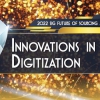Amid the pandemic, it’s fair to say the outsourced service operating model, particularly in customer service, has experienced forced change. While cost has always been the key driver in services outsourcing, Covid-19 has caused a monumental shift from cost being the critical point, to risk management and quality as the metrics and measures that now matter most. Call centers have had a particularly tough time of things; the actions that many of them have taken have been admirable, but it’s becoming clearer that long-term change has accelerated to the short term.
As businesses begin to ramp up again, companies will be reviewing what has worked and what has not. Now is the time for BPO’s to show that they are capable of shifting to new capabilities to help facilitate the ‘new normal’ and to look at providing a very different service operating model – one that maintains performance levels at its very heart.
Flexibility and Business Continuity are Re-defined
During Covid-19, a remarkable number of customer service teams were able to cope, but it’s fair to say that it wasn’t always an easy or comfortable effort. Many models relied on superhero efforts from customer service staff, with people working overtime and losing sleep to make sure service was not disrupted. As companies start to plan for a return, they are reviewing what they need from their delivery models, and now is the time for BPO’s to sit up and take notice if they are to stay in the game.
Business continuity planning has been challenged to the core, and senior decision-makers will also be looking to eliminate processes that aren’t working. Customer service agents themselves have new expectations: the pandemic has forced flexibility in the form of remote working onto many businesses, and the world of outsourcing has to evolve to embrace this necessity. Gone are the days where people will be willing to be crammed into call centers five days a week to facilitate a company’s customer service. At the same time, those running any form of the remote working model need to be fully prepared. Isolation, loneliness and lack of motivation can all be part of a cultural cost that businesses will face without putting in place the proper infrastructure to support their remote teams.
However, what many BPOs are realizing is that the issue of flexibility isn’t just about location: it’s about having a multichannel customer service environment mapped to specific query types and customer segments. Automation has, for many years, played a significant role here. It has been clear that organizations that were proactive in their response to coronavirus tended to have higher levels of automation running throughout the company or had fast-tracked their technological innovation to cope with it. Virtual assistants and chatbots were, in many cases, the saving grace for companies that raced against time to get their customer service agents up and running during lockdown.
However, while automation may help to ease accelerated volumes and route out simple queries that need not be directed to human customer service agents, it’s not enough to help with some of the other issues raised by the pandemic. Outsourcers were quick to realize the difficulties introduced by illness among customer service agents, the challenges of childcare amongst employees and the accelerated demands that have been placed on customer service teams due to increased demand for services during the pandemic.
Automation is also not a replacement for empathy, which has become paramount in a world that has experienced lockdown and a distinct lack of human contact. During lockdown, in our discussions with customer service agents, we heard time and time again that what many customers wanted was not just a solution to their problem, but also assurance from another human being that business would continue as usual. Automation rolled out carelessly can just become a landing place for customers, not a solution to their problems.
It’s clear that what is needed is a truly flexible workforce that can work where and when required, but one that is completely capable of empathy.
This is where the gig economy can work. Those taking on crowdsourced gig customer service tasks can operate where and when they want to, with the nature of gig naturally flexing to meet the scaled demand of queries we have seen during coronavirus. It’s called ‘GigCX’, and the technology platforms that route queries to gig crowds are available to make this a realistic and viable part of customer service operations. As Suzi Caesar, Global Director of Customer Experience at Sage, says: “it’s no longer about bringing the people to the work: it’s about bringing the work to the people.”
We’re likely to see the introduction of more GigCX into new service operating models, alongside traditional call center staff, virtual assistants and chatbots.
Innovate and Future-proof
There is no denying that many organizations’ outsourcing models could do with a variety of amendments and improvements. As lockdown eases, we can begin to evaluate where growth needs to take place, where our attention should be focused and what the future of outsourcing will look like. Any bypassing of red tape needs to be reviewed too - to ensure that short term changes (in areas like data security), forced by the pandemic, don’t become long term costs.
We know now that de-risking the outsourced customer service model is a top priority. To do this, organizations ultimately need to be looking at how they can make the nature of their outsourcing more flexible, taking into account automation, but also innovation in the form of new channels such as GigCX.
To further eliminate risk, businesses should be looking to future-proof every channel, be that full-time call center staff, chatbots, virtual assistants or the GigCX crowd. The gig crowd is, for example, completely capable of answering increasingly sophisticated queries as experts become more trained and can even move up to a pre-sales capacity. Chatbots and virtual assistants are also getting smarter, which leaves humans to take care of the empathy that is so needed right now.
We also need to aim high in the future. There is absolutely room for outsourcing in the new CX service operating model. Still, it depends entirely on the ability for outsourcers to adapt in the new environment, and for businesses to choose the best partner that will help them to reduce risk and prioritize quality simultaneously.







